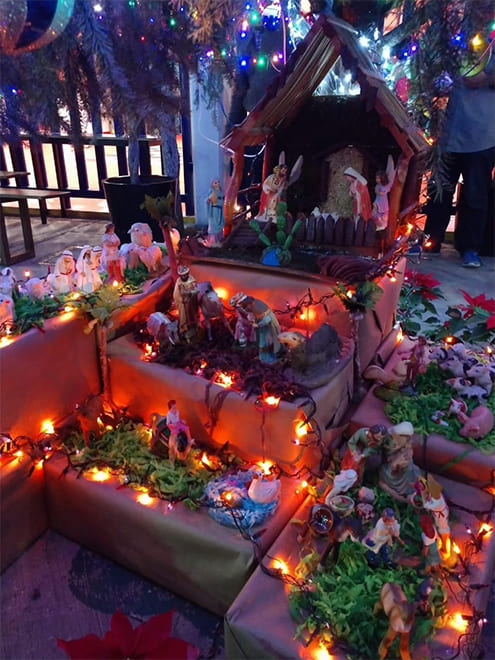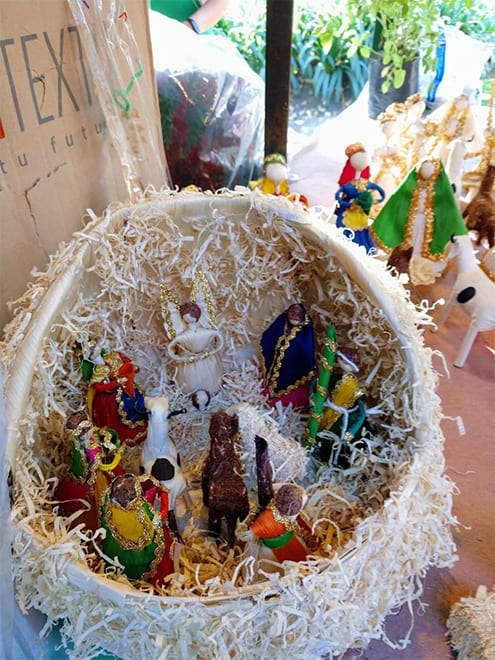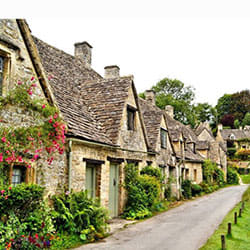The Christmas season in Mexico extends from early December through January 6. But the true final event of Christmas isn’t until February 2—making it a truly long holiday. Christmas decorations go up around late November or early December and stay up until around January 10. The brilliant Christmas decorations bring joy and warmth to cold, dark winter days—which is true in Japan, too.



Many department stores and shopping malls put up huge trees, which become great photo spots or opportunities to take pictures with Santa Claus
On December 24 (Christmas Eve), people usually get out of work early, and most supermarkets and department stores also close earlier than usual. Nobody works on Christmas Day, and everything—including department stores and banks—is closed. There are a few stores that open again in the evening, however. The New Year holidays are the same way, with a half-day off on New Year’s Eve and a whole day off on New Year’s Day. On January 2, everything returns to normal. Major supermarkets and convenience stores are usually open on New Year’s Day. Being Japanese, I was a little disappointed when the New Year flew by with so little fanfare. It made me realize just how solemn and unique the atmosphere is on New Year’s Day in Japan. Japanese people take extended vacation around the New Year, but in Mexico it’s common to take a longer holiday during Christmas. It varies by company, but most close between mid-December and a few days after Christmas.
One thing that’s completely opposite of Japan is that Christmas here is, virtually without exception, a time to spend with family. It’s not a time when people go out on dates to eat and then look at the beautiful Christmas lights somewhere. Instead, it’s New Year’s Eve that is typically spent going to countdown events with friends or in some other form of jubilant celebration.
Christmas in Mexico starts with holidays like Feast Day of the Virgin of Guadalupe, Mexico’s dark-skinned Mother Mary, and Las Posadas. Las Posadas is a period of celebration between December 16 and December 24 to commemorate Mary and Joseph’s search for a place to stay and give birth to their son. It traditionally has strong religious significance, with people reenacting the holy family’s search for an inn—originally by visiting neighborhood houses as if they were searching for an inn, and then celebrating with them. It’s become more casual in recent years, with schools and even companies holding Las Posadas Christmas parties. Neighbors even came to my condo during Las Posadas in 2019. It was a party where everyone enjoyed a meal together and sang Las Posadas songs, with the children getting involved too. There was even a piñata! Piñatas are a staple of children’s birthday parties, but while birthday piñatas are usually in the shape of cartoon characters or other fun designs, the one we had for Las Posadas was shaped like the star.

A piñata (they decorate the Paseo de la Reforma in Mexico City and supermarkets this time of year)
The children take turns swinging a stick at the piñata, starting with the youngest. Once the candy inside starts falling to the ground, everyone dives down to pick it up. It’s the event that kids most look forward to at parties.
Families gather to celebrate on the night of Christmas Eve, and Mexico also has certain dishes just for the holiday. The main course is a whole roasted turkey (pavo) stuffed with a mixture of ground beef and pork, spices, dried fruit, and other ingredients. Most people think of America when they think of roast turkey, but apparently the turkey is also native to Mexico and has been used in Mexican cuisine since the time of the Aztecs. There’s also roasted pork tenderloin dish called lomo, salads where fruit and nuts are mixed with cream, and romeritos, which is seepweed and potato simmered in mole (a kind of chocolate sauce) and poured over croquettes. There’s also Bacalhau, which is salted cod stewed with tomatoes, and many other unique Mexican dishes that aren’t eaten in Japan. Unfortunately, I haven’t been lucky enough to try them yet, but I can’t wait to enjoy them someday. This Christmas, my family had roast chicken instead of pavo. We bought one that was flavored with Christmas spices, but you can actually find roast chicken in the supermarket year-round in Mexico. We also prepared a Christmas cake like people do in Japan, but it turns out that Mexicans don’t eat the kind of Christmas cake that people typically do back home. Families make so much Christmas food on Christmas Eve that they end up eating it over several days, so in that sense it’s a lot like the osechi-ryori we eat over the New Year holidays in Japan.
In addition to Christmas trees, people also decorate with nativity scenes (nacimiento) during this time. Nativity means “birth”, and the decorations recreate the scene of Christ’s birth.

A large nativity scene in a shopping mall

They’re often found under Christmas trees as well
In most nacimientos, the unborn Christ figure is missing.
I’m sure that most people purchase their Christmas decorations at department stores or shopping malls, but in Mexico, vendors often set up street stalls near parks or other open spaces, so it can be fun to poke around when you’re out taking a walk.

Lincoln Park in Mexico City. They also sell piñatas here.

A handmade nativity scene
There isn’t really any traditional food served in Mexico on the New Year holiday or any special events held, but there is a custom of eating twelve grapes on New Year’s Eve. The practice dates back to 17th-century Spain, with the twelve grapes representing the twelve months of the year. Eating these grapes of luck on the day is said to bring good luck throughout the coming year. In Mexico City, they have a huge countdown event around The Angel of Independence statue each year, where crowds come out to celebrate and listen to musical performances to ring in the New Year. The streets were quiet this year with the event canceled due to the pandemic, but the television stations still broadcast the countdown live from their studios.

Live broadcast from a TV studio (wine and grapes are an essential part of the countdown, whether it’s an outdoor event or on TV)
Mexico suffers from more crime in December than at any other time, but you can enjoy large events like this relatively safely since the police are out in full force. The main thing to be aware of is that the nearby streets close down during events, so you’re unlikely to get anywhere near them without walking (certainly not in your own car, but not even in a taxi). Like a lot of places, the streets can be a little dangerous at night, so it’s best to stay on the main roads after dark.
On January 6 of the New Year is Epiphany, or Dia de los Reyes Magos. It celebrates the Three Wise Men, who are important figures during the Christmas season. It’s usually on this day that children get gifts in Mexico, rather than from Santa Claus. It’s the day that the Three Wise Men came from a great distance to celebrate the birth of Jesus. Because they brought gold, frankincense, and myrrh, children also receive three gifts on this day. Of course, everybody in Mexico still knows who Santa Claus is. The kids in my daughter’s preschool wrote letters to Santa, and the shopping malls are set up so that kids can write and mail letters to him as well. Because of this, a lot of kids actually get presents twice during the season—once on Christmas Day and once on Dia de los Reyes Magos. The traditions differ by state and by household, with some families choosing to give gifts only on one of the days, so even friends may end up with different numbers of presents on different days.
During Epiphany, Mexicans also eat rosca (or rosca de reyes), which is bread shaped like a crown.

Rosca is sold individually or in packages designed to feed lots of people

Rosca filled with matcha cream at a bakery run by a Japanese person

Everyone divides up the bread and eats it, and one of the pieces contains a small plastic figure of the Christ child. Whoever gets it is said to have good luck throughout the coming year.

Figure of the Christ child
It’s not exactly clear whether the person is all that lucky, however, since whoever gets the figure also has to treat everyone else to tamales on February 2.
It is on February 2, then, that every Christmas-related event is over in the very long Mexican Christmas season. Mexicans don’t tend to save their money, but many will use what little savings they have during this time of year. Perhaps it’s a testament to the courage of the Mexican people. In any case, it’s fun being able to spend Christmas and the New Year holidays in a completely different way than we do in Japan.






























































